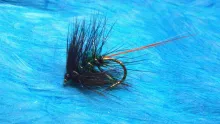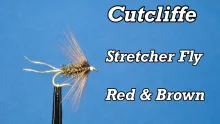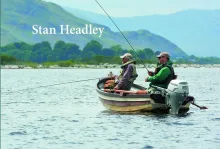Materials Used;
Hook, Fulling Mill Petition Heavyweight size 10 Barbless
Thread, Uni-8/0 Black
Tail Glo-Brite Floss No.12 Lime Green
Ribs, Small Gold Wire and Medium Gold Holographic
Body, Black Dubbing
Body Hackle, Black Cock or Hen
Front Hackle, Natural Brown Cock or Hen
Eyes, Jungle Cock
- Log in to post comments







